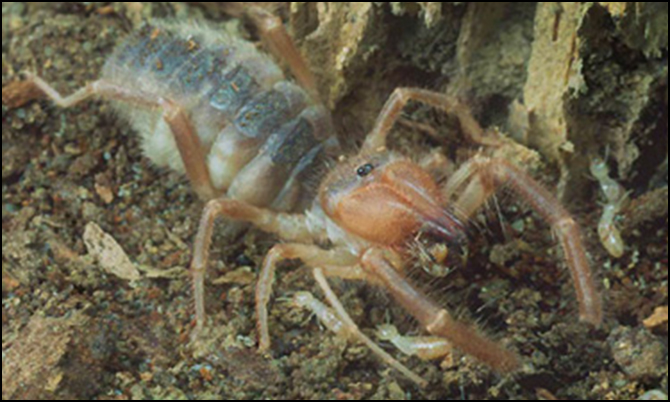Prey
[This section contributed by Dr. Robert A. Wharton and Kristie Reddick, Department of Entomology, Texas A&M University]
Solifuges are voracious predators. Most of the species that have been examined in any detail are capable of consuming a wide range of prey items, mostly insects and other arachnids such as spiders. Muma (1966) and Cloudsley-Thompson (1977) briefly summarize previous observations and provide extensive citations to the earlier literature on prey items (including predation on vertebrates) and feeding behavior. While much of the information on solifuge predation is anecdotal in nature, Muma (1966) and Punzo (1993, 1994a, 1994b, 1997) provide good experimental data and some field observations on prey choice and feeding behavior for several species of Eremobatidae and a few Ammotrechidae from southwestern USA. Based on his studies of eremobatids, Muma (1982) concluded that while adults are generalist predators, most feed on termites, and that immatures feed primarily on termites. Additionally, there are several records of termitophilous species from other solifuge families, and members of the genus Old World genus Hemiblossia (Daesiidae) have been frequently collected from termite mounds or among foraging columns (Lawrence 1963). Punzo (1993, 1994a, b), however, did not find termites among the 111 dietary items he identified from his observations on actively foraging eremobatids. His data nevertheless do provide solid evidence of a broad diet for the two species of Eremobates that he studied. Both Muma (1966) and Punzo (1993, 1994a, b, 1998) demonstrated that at least some solifuges rejected prey items that were either too large, too heavily sclerotized, or which may have been protected by defensive chemicals. Other solifuges, however, did not.

Female Eremobates sp., palpisetulosus group, from California, USA, feeding on termites. Photo by Warren E. Savary.
